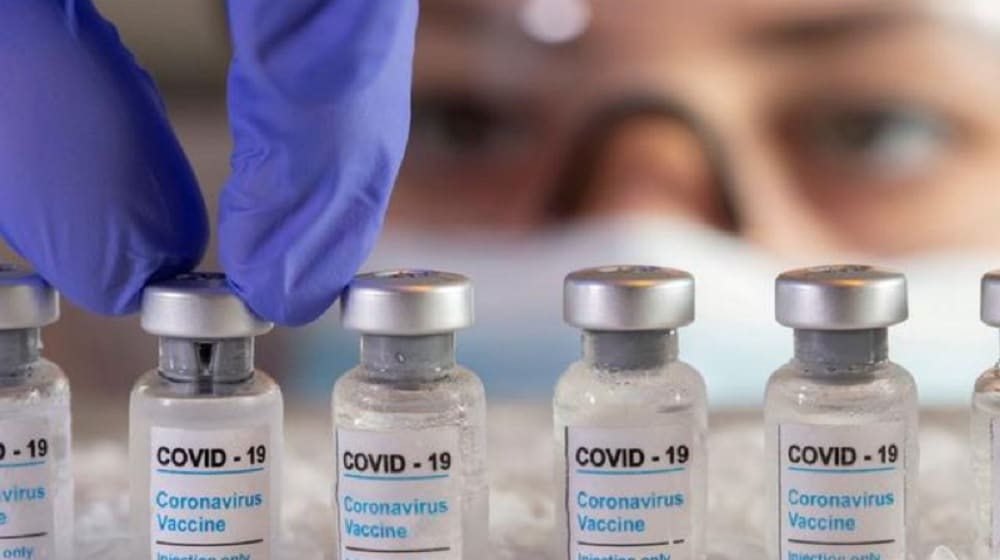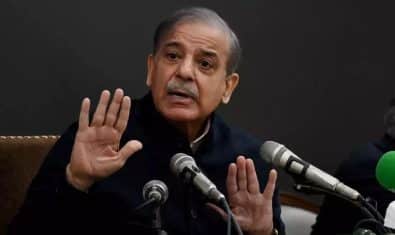The Government of Pakistan has set its coronavirus vaccination target for the end of 2021 to 70 million people, and fully vaccinated approximately 3 million people and partially vaccinated around 13 million people by 1 July 2021, as noted by the International Monetary Fund (IMF).
The IMF stated in its updated report ‘Policy Actions Taken by Countries’ that contains a review of the various steps that Pakistan has taken to deal with the pandemic that it seems to be under control with the new daily cases falling below 1,000 and the positivity rate falling below 2.5 percent.
ALSO READ
WHO Recommends Use of Arthritis Drug for COVID-19’s Treatment
Economic activity worsened notably in the fiscal year (FY) 2020 with a negative growth of 0.5 percent, but it rebounded strongly in FY 2021 with growth preliminary estimated at 3.9 percent.
The report revealed that most of the remaining restrictions are being lifted in July 2021 and that the number of inbound flights has increased. Meanwhile, vaccination certification is being made mandatory for the usage of indoor services and entry to events.
The vaccination campaign is being supported by the COVAX facility, the World Bank, and the Asian Development Bank through the provisions of funding and technical assistance.
Due to the delayed supplies through the COVAX facility, the government is allocating funds to procure vaccines from China and is also rolling out ‘PakVac’ — a locally produced vaccine that was developed by the Chinese single-shot vaccine producer CanSino.
ALSO READ
NCOC Confirms Detection of COVID-19 Variants in Pakistan
The government has also allowed private laboratories since April 2021 to import and deliver vaccines (Russia’s Sputnik V). Additionally, the FY 2021 provincial budgets provided tax relaxations and sizeable increases in expenditure allocations, especially on health services.
The State Bank of Pakistan (SBP) expanded the scope of the existing refinancing facilities and introduced three new ones in 2020 to:
- Support hospitals and medical centers in the purchase of COVID-19-related equipment (47 hospitals, Rs 15.6 billion, to date);
- Stimulate investments in new manufacturing plants and machinery, as well as the modernization and expansion of the existing projects (628 new projects, Rs. 436 billion to date, ended in March 2021); and
- Incentivize businesses to avoid the laying off of workers during the pandemic (2,958 firms, Rs. 238 billion to date).
These facilities had been extended beyond their initial deadline of June 2020 to either September or December 2020, and the schemes are now mostly expired.
ALSO READ
Govt Finalizes Convidecia COVID-19 Vaccine’s Price
The SBP also launched the following temporary regulatory measures to maintain the soundness of the banking system and sustain economic activity:
- reducing the capital conservation buffer by 100 basis points to 1.5 percent;
- increasing the regulatory limit on the extension of credit to SMEs by 44 percent to Rs. 180 million;
- relaxing the debt burden ratio for consumer loans from 50 percent to 60 percent;
- allowing banks to defer clients’ payment of principal on loan obligations by one year (Rs. 657 billion being deferred to date);
- relaxing the regulatory criteria for restructured loans for borrowers who require relief beyond the extension of the principal repayment for one year; and
- suspending bank dividends for the first two quarters of 2020 to shore up capital.
Additionally, it has introduced mandatory targets for banks to ensure loans to construction activities account for at least five percent of the private sector portfolios by December 2021.





















